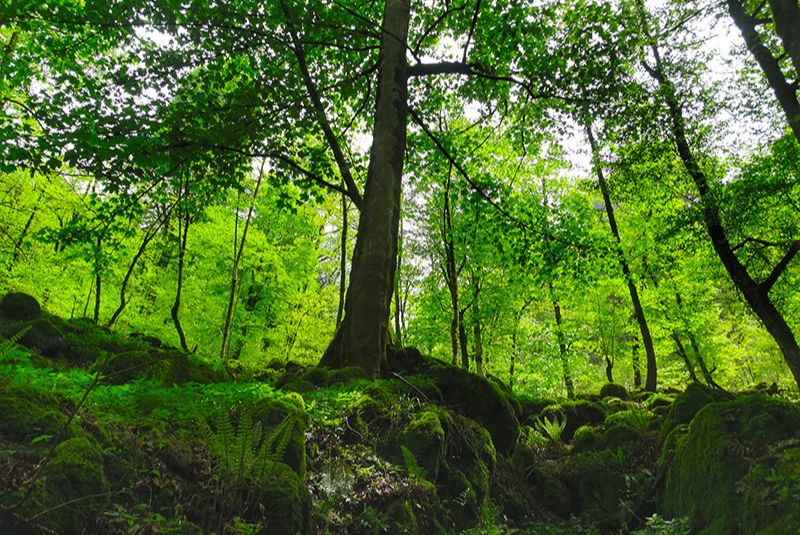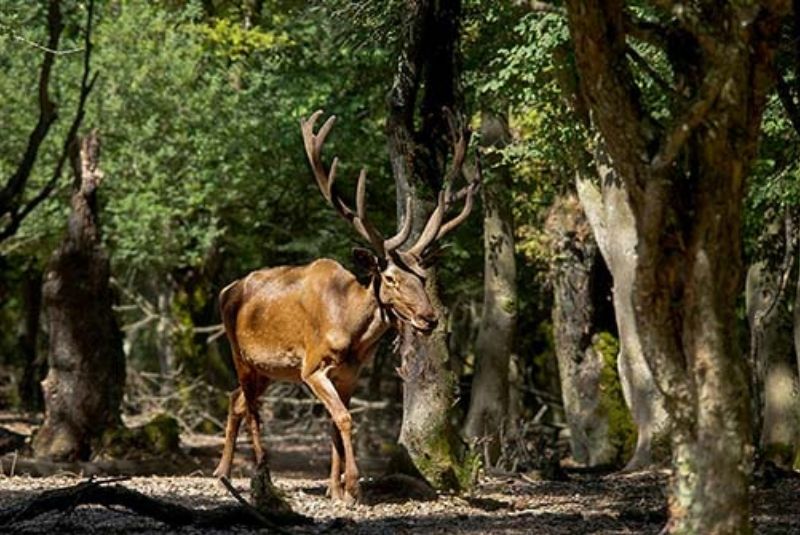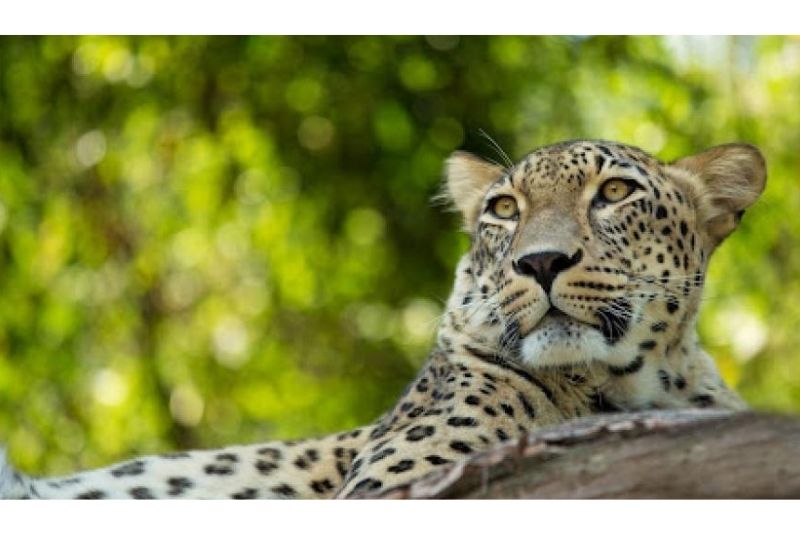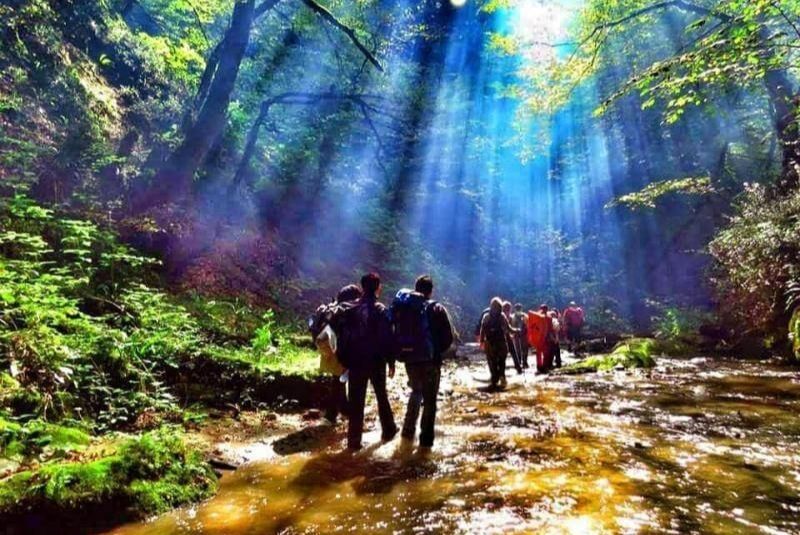Caspian Hyrcanian Forests
The Caspian Hyrcanian Forests, a natural treasure nestled in the northern regions of Iran and Azerbaijan, are a remarkable testament to Earth's rich biodiversity and ecological diversity.
Spanning over 50,000 square kilometers along the southern coast of the Caspian Sea, these ancient woodlands have a history dating back millions of years, making them one of the oldest forests on the planet. With lush green canopies, towering trees, and a plethora of unique flora and fauna, the Caspian Hyrcanian Forests offer a captivating spectacle for both scientists and nature enthusiasts alike.
This article aims to dive deep into the wonders of the Caspian Hyrcanian Forests, shedding light on their historical roots, ecological significance, and the multitude of challenges they currently face.
Caspian Hyrcanian Forests Historical Background
The origins of the Caspian Hyrcanian Forests are shrouded in the mists of geological time. These ancient woodlands, often referred to as "living fossils," have a history dating back millions of years. They can be traced to the Tertiary period, making them among the oldest forest ecosystems on Earth. This historical significance extends beyond mere age; it lies in the rich tapestry of life that these forests have nurtured and preserved over eons. The Caspian Hyrcanian Forests have witnessed the rise and fall of civilizations, climate shifts, and the evolving dance of flora and fauna across epochs.
Throughout history, humans have interacted with the Caspian Hyrcanian Forests in various ways, both beneficial and detrimental. Indigenous communities in the region have long depended on the forests for sustenance, utilizing the abundant resources provided by the ecosystem. However, as populations grew and societies advanced, the forests faced increasing pressure. Deforestation, logging, and unsustainable agricultural practices threatened the delicate balance of this ancient ecosystem. The Caspian Hyrcanian Forests can be found in historical records and texts, documenting the human connection to these woods, both as a source of livelihood and a place of reverence.
The story of the Caspian Hyrcanian Forests is one of resilience, adaptation, and, increasingly, conservation efforts. Over time, as the recognition of their ecological importance grew, so did the initiatives aimed at their protection. These efforts faced numerous challenges, including political instability, economic pressures, and the ever-present threat of illegal logging. However, they also yielded important successes, with organizations and governments coming together to establish protected areas and raise awareness about the fragile nature of this ecosystem.
Location and Geography of the Caspian Hyrcanian Forests

The vast expanse of the Caspian Hyrcanian Forests stretches along the southern coast of the Caspian Sea, forming a natural barrier between the sea and the sprawling landscapes of northern Iran and Azerbaijan. Encompassing an area of approximately 50,000 square kilometers, these ancient woodlands are a defining feature of the region's geography. The boundaries of this remarkable ecosystem have evolved over time, influenced by climatic changes, human activities, and conservation efforts. Understanding the geographical extent is essential to appreciate the unique characteristics of the Caspian Hyrcanian Forests.
Climate and Environmental Conditions
The Caspian Hyrcanian Forests owe much of their ecological diversity to the unique climatic and environmental conditions of the region. The forests experience a subtropical, humid climate, influenced by the Caspian Sea's proximity. This climate fosters high levels of precipitation, resulting in lush, evergreen canopies and vibrant undergrowth. Caspian Hyrcanian Forests is intrinsically tied to these climatic conditions, as they shape the character of this ecosystem and influence the myriad species that call it home.
Unique Ecological Features
What sets the Caspian Hyrcanian Forests apart from other ecosystems is their unparalleled ecological diversity. Within this ancient forest, a stunning array of flora and fauna thrive, many of which are found nowhere else on Earth. Towering trees like the Persian ironwood (Parrotia persica) and the Caucasian zelkova (Zelkova carpinifolia) create a majestic canopy, while a rich understory includes a variety of shrubs, herbs, and ferns. The ecosystem's uniqueness is further underscored by the presence of endangered and rare species, such as the Persian leopard and the Caspian brown bear.
Biodiversity and Flora

The Caspian Hyrcanian Forests are a botanical wonderland, boasting an impressive array of plant species. Within the dense canopy and lush undergrowth, botanists have identified over 2,000 plant species, including endemic varieties found nowhere else on the planet. These encompass a wide range of trees, shrubs, ferns, and herbaceous plants. Among the most iconic inhabitants are the Persian ironwood, Caucasian zelkova, and the stunning Hyrcanian hazel.
Rare and Endangered Species
One of the most critical aspects of the Caspian Hyrcanian Forests is their role as a sanctuary for rare and endangered species. The dense foliage provides refuge for the Persian leopard, an endangered big cat, and the elusive Caspian brown bear. Additionally, the forests are home to various species of birds, amphibians, and insects with limited distribution ranges. Their survival depends on the preservation of this precious ecosystem.
The Role of the Forests in the Global Ecosystem
While the Caspian Hyrcanian Forests are a regional treasure, their significance reverberates on a global scale. These woodlands play a pivotal role in maintaining the planet's ecological balance. As carbon sinks, they help mitigate climate change by absorbing and storing significant amounts of carbon dioxide. Additionally, they contribute to the regulation of regional climate patterns, including precipitation and temperature. Caspian Hyrcanian Forests is a symbol of nature's intricate web of life, reminding us of the interconnectedness of ecosystems worldwide and the importance of preserving biodiversity.
Fauna of the Caspian Hyrcanian Forests

The Caspian Hyrcanian Forests are not just a haven for diverse plant life; they also shelter a remarkable array of animal species. Within the embrace of their ancient trees, Caspian Hyrcanian Forests encompasses an astonishing biodiversity. These woodlands are inhabited by various mammals, including the Persian leopard, Caspian brown bear, and the elusive golden jackal. Avian enthusiasts can delight in spotting the Caucasian black grouse and the Caspian pheasant among the numerous bird species that call these forests home. This section explores the richness of animal life that flourishes in this unique ecosystem.
Unique Wildlife and Conservation Efforts
Due to its status as a global biodiversity hotspot, these forests have garnered international attention. Conservation organizations and governments have initiated projects to safeguard the Persian leopard, a critically endangered species, and the Caspian brown bear, whose populations have dwindled. Through monitoring, habitat restoration, and anti-poaching initiatives, these efforts aim to secure a future for these magnificent creatures, ensuring that the Caspian Hyrcanian Forests continue to be a refuge for rare and unique wildlife.
Interactions between Flora and Fauna
The forests provide food, shelter, and breeding grounds for numerous animals, influencing their behavior and life cycles. Likewise, animals contribute to seed dispersal and the maintenance of plant diversity through their foraging habits. These interactions highlight the delicate balance that characterizes this ecosystem, where the Caspian Hyrcanian Forests symbolizes the harmonious relationship between flora and fauna.
Cultural and Human Connection

Beyond their ecological significance, the Caspian Hyrcanian Forests hold a deep-rooted connection with indigenous communities whose history is intricately intertwined with these ancient woodlands. Caspian Hyrcanian Forests signifies not just a place of natural beauty but a living cultural heritage. For generations, the local communities, particularly in northern Iran, have depended on the forests for sustenance, shelter, and cultural identity. These forests have provided resources like timber, nuts, and medicinal plants, supporting their traditional ways of life. Understanding the historical presence of these communities is vital in recognizing the human dimension of these woodlands.
Cultural Significance and Traditions Tied to the Forests
The Caspian Hyrcanian Forests have inspired a rich tapestry of cultural significance and traditions. Local folklore, myths, and legends have been woven around the ancient trees, and the forests have been the backdrop for cultural celebrations and rituals. The forests are integral to the identity of these communities, serving as a source of inspiration for art, music, and storytelling. Caspian Hyrcanian Forests serves as a symbol of cultural heritage, a testament to the enduring relationship between humans and nature.
Sustainable Practices and Ecotourism
In recent years, there has been a growing awareness of the need to balance human interactions with the Caspian Hyrcanian Forests. Sustainable practices and ecotourism initiatives have emerged as a means of both preserving this natural wonder and providing livelihoods for local communities. These initiatives emphasize low-impact tourism, eco-friendly accommodations, and community engagement, ensuring that the forests continue to thrive while offering unique experiences to visitors.
Caspian Hyrcanian Forests Conservation Challenges

Caspian Hyrcanian Forests is inextricably linked to a pressing issue: the myriad challenges these ancient woodlands face today. Despite their ecological and cultural importance, these forests are confronting a range of threats that jeopardize their existence. One of the most significant contemporary challenges is habitat loss due to human activities, including urbanization, agriculture, and infrastructure development. Understanding these current threats is crucial to formulating effective conservation strategies.
Deforestation, often driven by illegal logging, remains a persistent and formidable adversary to the Caspian Hyrcanian Forests. The value of timber and other forest products has led to unsustainable practices that degrade the ecosystem and disrupt the delicate balance of flora and fauna. Clear-cutting and illegal logging have left scars on the landscape, robbing the forests of their biodiversity and resilience. Additionally, the expansion of agriculture and human settlements has further encroached upon these precious woodlands, amplifying the challenges of habitat destruction.
Climate Change Impact
Climate change poses an increasingly grave threat to the Caspian Hyrcanian Forests. Rising temperatures, altered precipitation patterns, and more frequent extreme weather events are affecting the health and stability of this ecosystem. These changes can disrupt the natural rhythms of the forests, impacting species distribution, reproduction, and overall vitality. As climate change accelerates, it amplifies the complexity of conserving this ancient ecosystem.
Conservation Efforts

Conservation of the Caspian Hyrcanian Forests has become a global endeavor. Local initiatives, often led by passionate individuals and grassroots organizations, are working tirelessly to protect these woodlands. These efforts include reforestation projects, habitat restoration, and community engagement programs aimed at promoting sustainable practices. Furthermore, international organizations and partnerships have been forged to provide financial support, expertise, and a coordinated approach to preserving this ecological treasure.
Recognizing the significance of the Caspian Hyrcanian Forests in the context of global biodiversity conservation, governments of the region have implemented legal protections and regulations to safeguard these ancient woodlands. National parks and protected areas have been designated to restrict human activities that threaten the forests, and regulations have been put in place to combat illegal logging and deforestation. International agreements and conventions further solidify the commitment to preserving this ecosystem, underscoring the importance of cooperative efforts.
Amid the challenges, there are inspiring success stories and ongoing projects that breathe hope into the future of the Caspian Hyrcanian Forests. Conservationists and scientists are witnessing positive outcomes from reforestation efforts, where native tree species are making a comeback. Monitoring programs for endangered species are yielding valuable data, informing effective protection measures. Sustainable tourism initiatives are not only providing economic benefits to local communities but also fostering a sense of stewardship for the forests.
Future Outlook of Caspian Hyrcanian Forests
With concerted conservation efforts, there is a real possibility of reversing some of the damage inflicted on these woodlands. Reforestation initiatives, habitat restoration, and sustainable land-use practices can help these ancient forests regain their vitality and expand their reach.
Ongoing scientific studies, ecological research, and monitoring programs provide valuable insights into the changing dynamics of this ecosystem. Moreover, education and awareness-raising efforts are vital in fostering a sense of responsibility and stewardship among local communities and the global population.
Preserving the Caspian Hyrcanian Forests is not only a regional imperative but also carries global implications. The Caspian Hyrcanian Forests embodies a broader message about the importance of conserving biodiversity and natural ecosystems worldwide. As a global biodiversity hotspot, the survival of these woodlands is not just a matter of local or national concern; it is a global responsibility. The Caspian Hyrcanian Forests serve as a model for the preservation of ancient ecosystems and a reminder that we must act collectively to protect the planet's natural heritage.
Bottom Line
The Caspian Hyrcanian Forests are a treasure trove of natural and cultural wonders, and they beckon you to experience their magic firsthand. These woodlands are more than just a destination; they are a testament to the beauty of our planet and the urgent need to protect it. The Caspian Hyrcanian Forests encapsulates the essence of this unique ecosystem, and it calls out to those who seek adventure, discovery, and a deeper connection with nature.
We invite you to begin an extraordinary journey to the Caspian Hyrcanian Forests with tour packages. Imagine walking beneath towering Persian ironwood trees, listening to the rustle of leaves, and catching glimpses of the elusive Caspian brown bear. Picture yourself immersed in the rich tapestry of local culture, sharing stories with indigenous communities, and witnessing age-old traditions tied to these ancient woodlands. Join us on this journey, and together, we'll ensure that the Caspian Hyrcanian Forests continue to enchant and inspire generations to come.


Comment
Leave a Comment